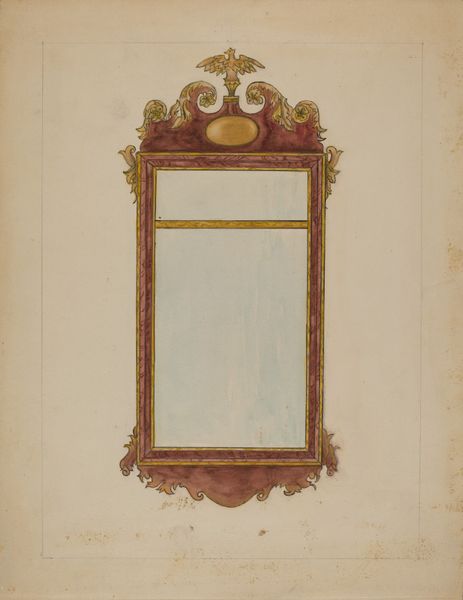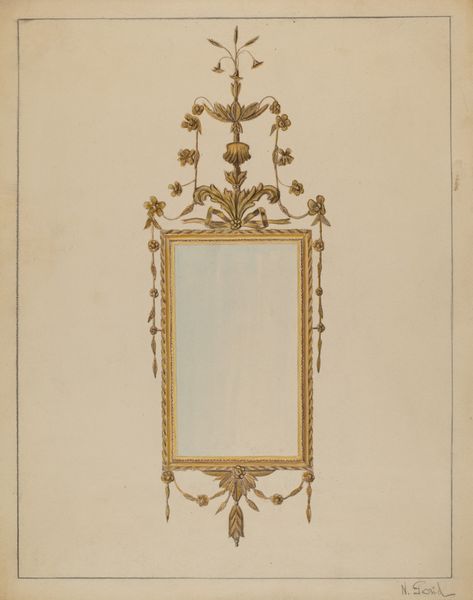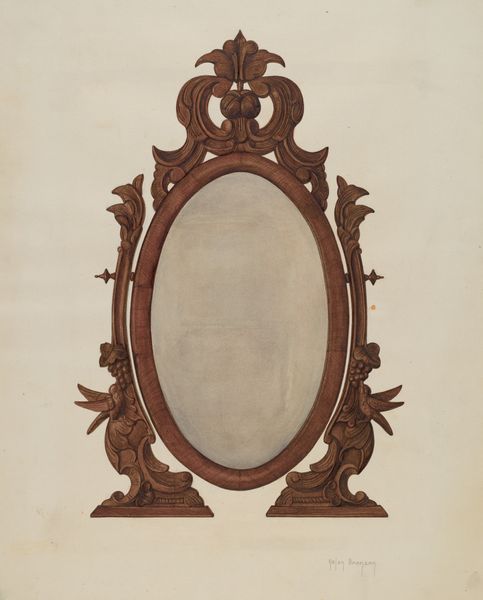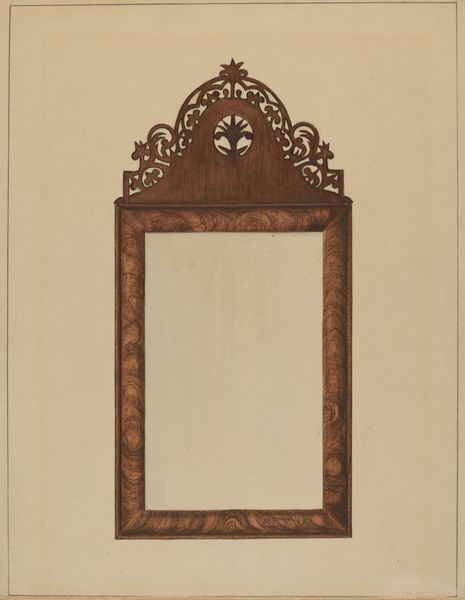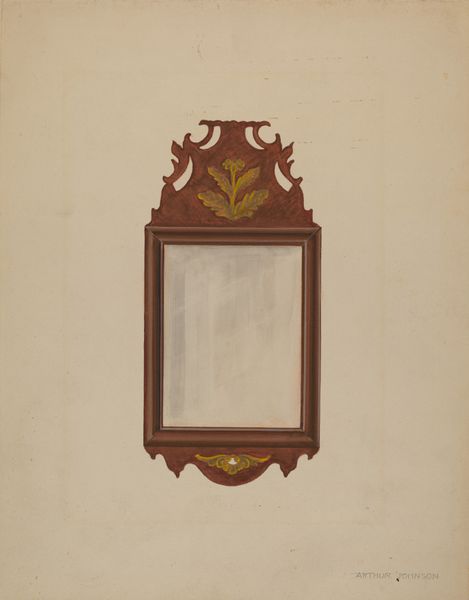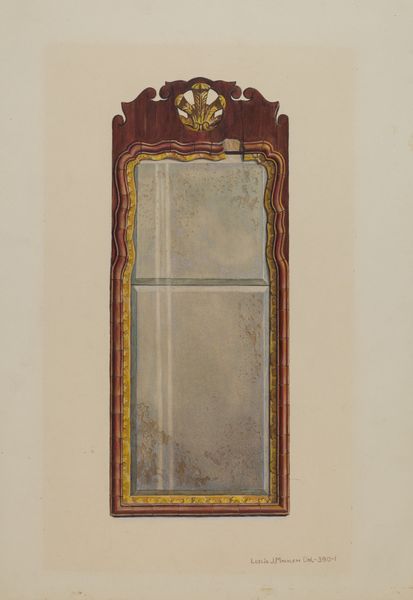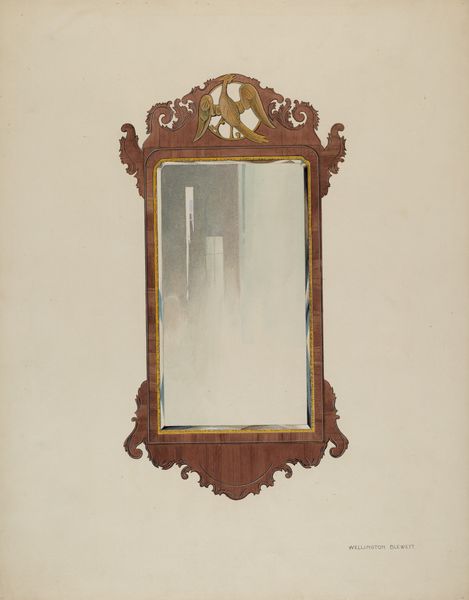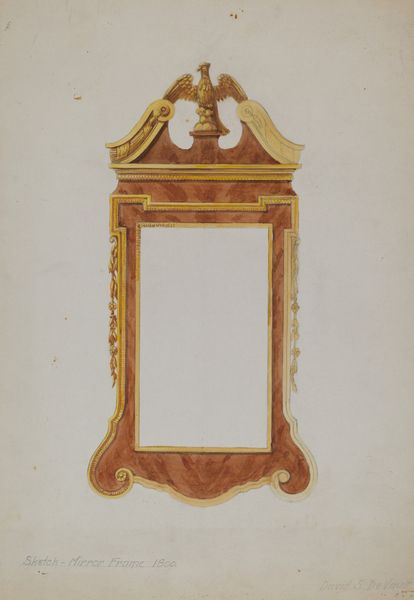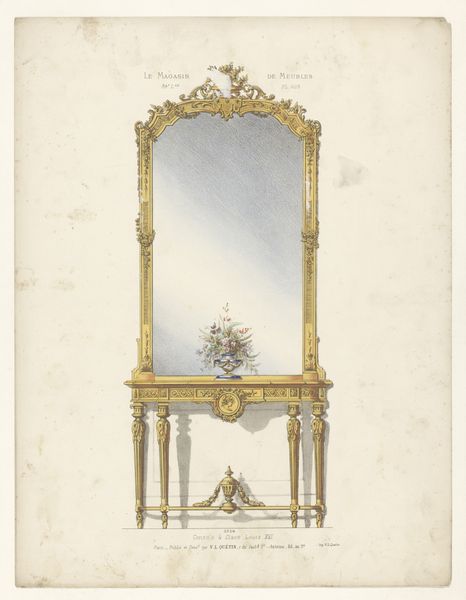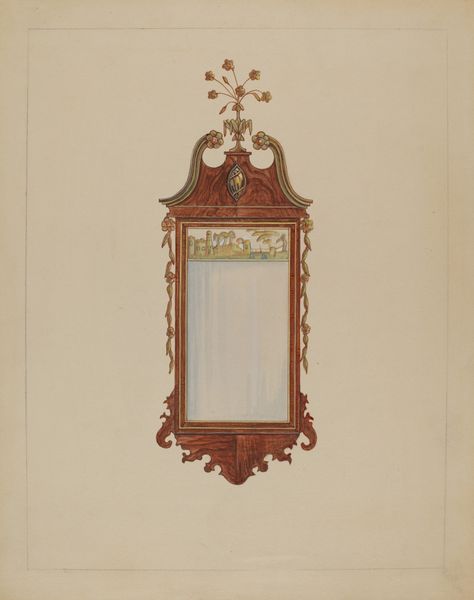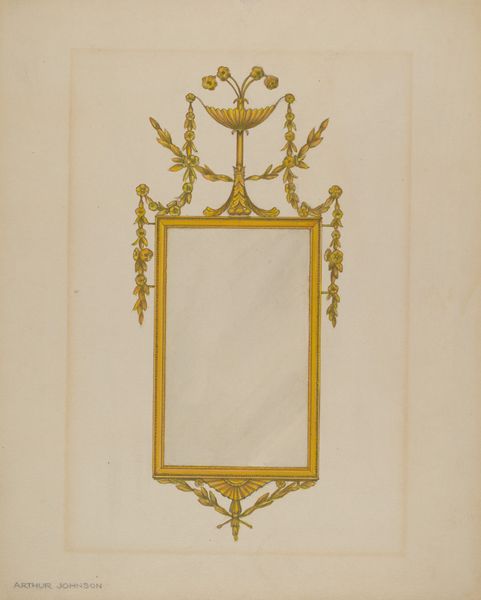
drawing, paper, watercolor
#
drawing
#
paper
#
watercolor
#
watercolour illustration
#
decorative-art
#
watercolor
Dimensions: overall: 30.5 x 22.8 cm (12 x 9 in.) Original IAD Object: 62"high; 29"wide
Copyright: National Gallery of Art: CC0 1.0
Art Historian: Today, we’re observing “Mirror,” a watercolor drawing on paper created around 1936 by Lorenz Rothkranz. Curator: My eye is immediately drawn to the ornate framing! The dark wood, offset by those floral gilt embellishments…it’s almost dizzying with detail. Art Historian: This drawing presents a fascinating look at the intersection of craft and design during the mid-20th century. At the time, designers frequently drafted designs for furniture and other functional objects, but they didn't always translate from paper into a gallery space, which begs the question: why preserve the medium of production itself? Curator: You’ve brought up such a great point about production itself: the medium’s luminosity seems deliberately enhanced with the goal to highlight those sharp, baroque edges and curves against the white background of the wall behind. This creates an illusion of depth, tricking my mind’s eye into seeing this as more than just paper. Art Historian: Right, and how does this rendering both affirm and disrupt societal expectations for wealth, or beauty at the time? During the Depression era, owning such an extravagant item would signify a high degree of financial freedom. Was Rothkranz interested in commenting on class divides through representations of such gilded and floral items? Curator: That sharp juxtaposition of gold filigree against the mahogany backdrop—it creates an impression of subdued elegance that also alludes to wealth. But what strikes me the most is how the play of color emphasizes its symmetry! There's a very clear top, middle, and base divided by that inner frame; it almost demands attention to form, as opposed to functionality. Art Historian: Precisely. By presenting such designs divorced from production, do you think he sought to make the case for aesthetics as part of everyday experience during times of financial insecurity, therefore implying a social message? Curator: I like that. It does hint at aspirational consumption, and emphasizes beauty, even when not accessible to all…For me, I appreciate that the mirroring serves as a beautiful case study in design and composition; thank you for enriching it with that contextual element. Art Historian: And thank you for showing me how the sheer aesthetics of this design provides another portal into social commentary through medium and style alone.
Comments
No comments
Be the first to comment and join the conversation on the ultimate creative platform.
